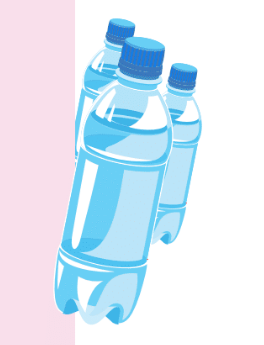Most of the things we buy use disposable plastic
People use and throw away packaging, cosmetics, straws - even fishing nets. Mostly people use m any different kinds of plastics only once and never recycle or reuse them , which means our landfills and beaches are awash in these single - use plastic. W e currently recover only 5 - 10% of the plastics we produce. 50% are buried in landfills and some are remade into durable goods, but much of it washes out to sea. Our ocean is a network of curren ts that circulate water around the world - called gyres . These five massive, slow rotating whirlpools accumulate plastic, and because petroleum plastics are designed to last, the plastic trash will remain in the ocean for decades or longer. In the ocean, su nlight and waves cause floating plastics to break into increasingly smaller particles, but they never completely disappear or biodegrade. Plastic particles act as sponges for waterborne contaminants such as pesticides. A single plastic microbead can be 1 m illion times more toxic than the water around it. Fish, turtles and even whales eat plastic objects, which can sicken or kill them. Ocean animals are also killed by dangerous plastic waste that entangles or traps them, often suffocating them underwater. Sm all ocean animals, like fish, ingest tiny plastic particles. These toxic particles pass on to us when we eat seafood. Hundreds of ocean species are in danger because of plastic pollution, as well as the survival of the ocean itself. Humans depend on the oc ean for food and as a healthy ecosystem that maintains the balance of the greenhouse gas CO2.

